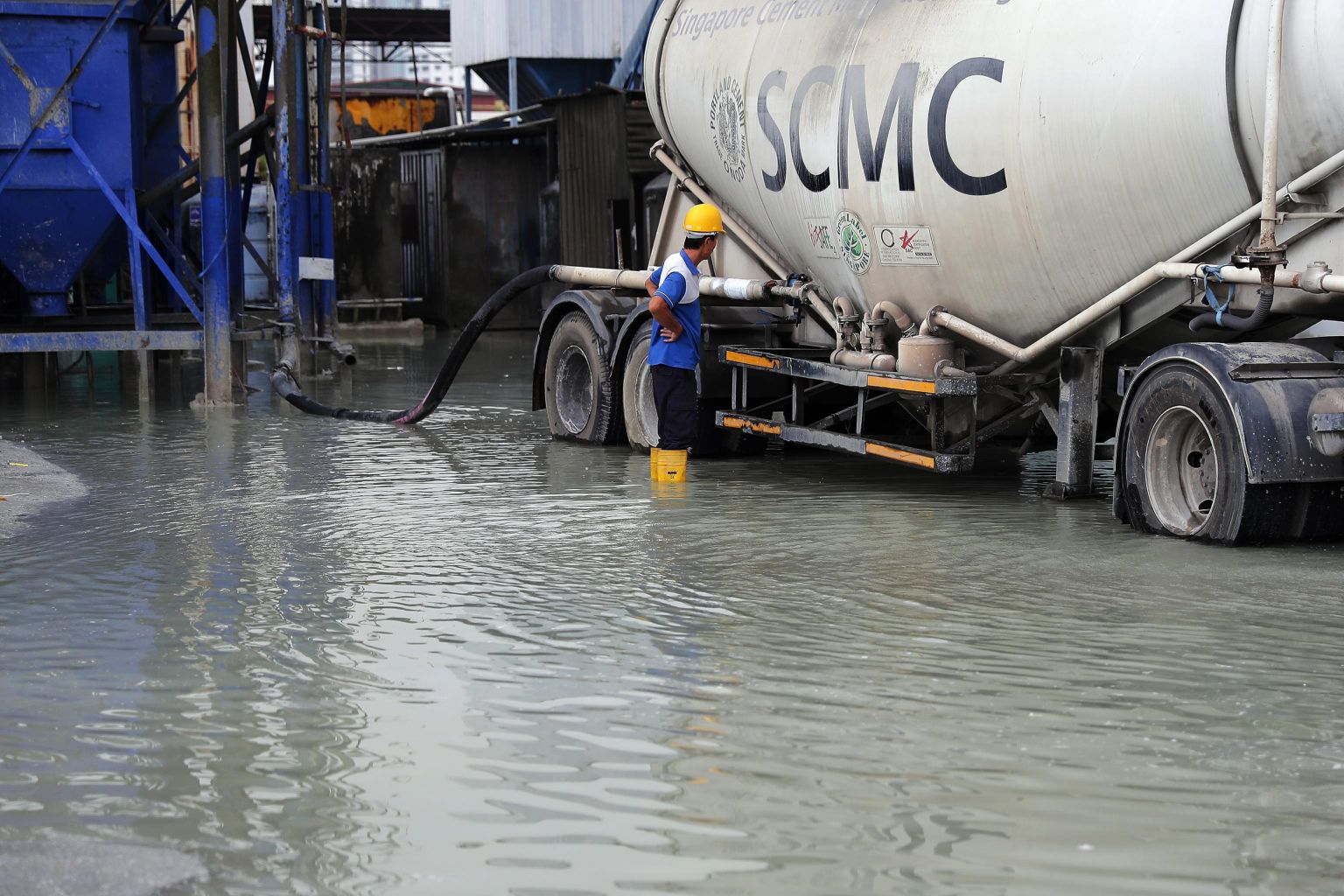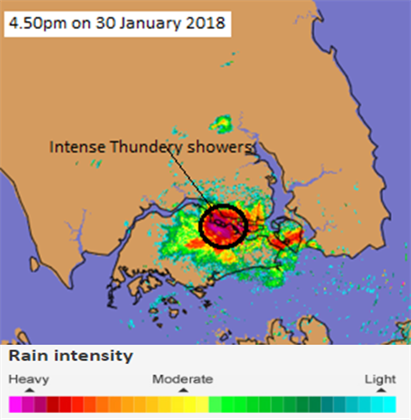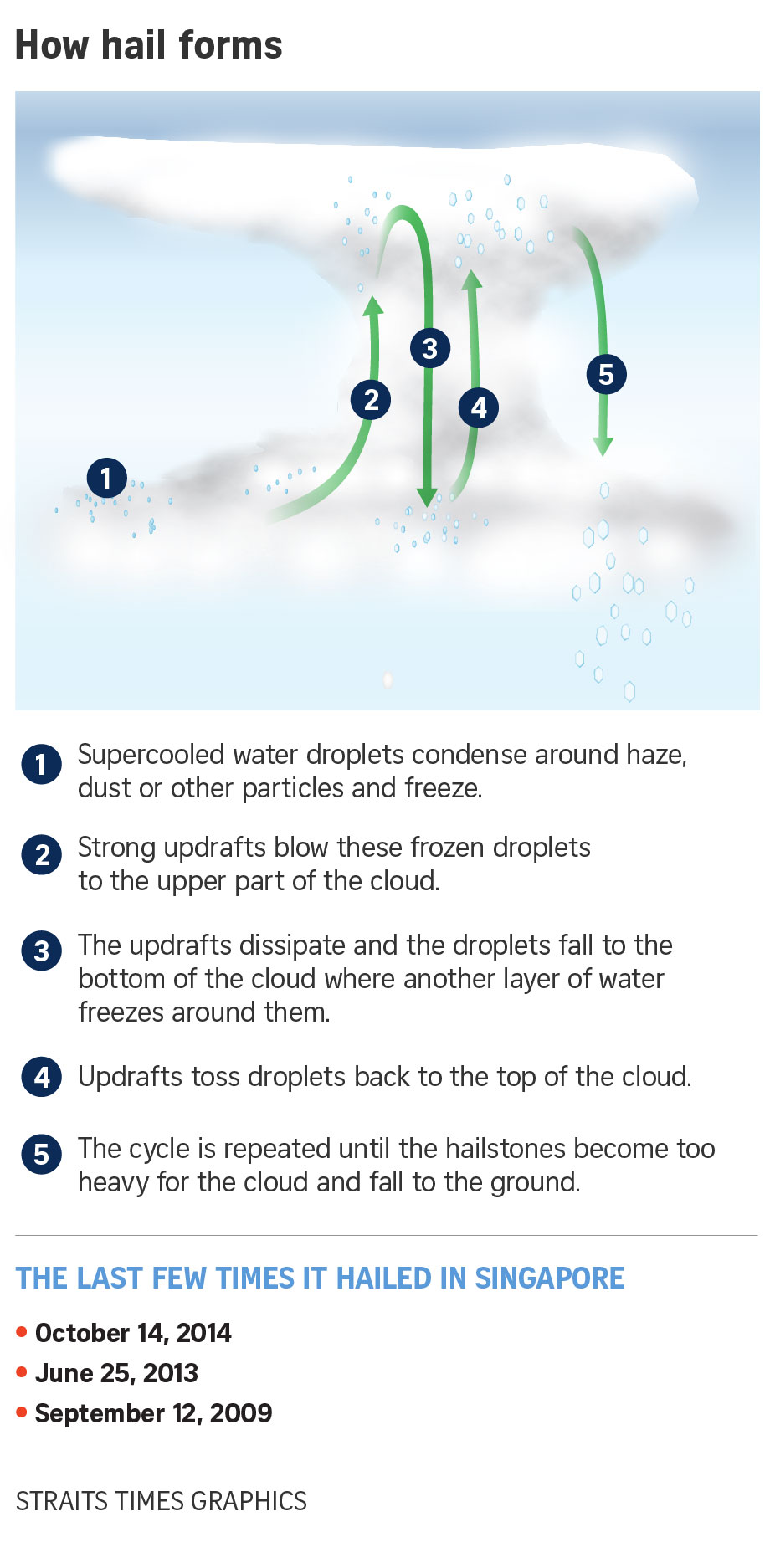Rain was heaviest in northern Singapore on Tuesday, where hailstones were reported: MSS
Sign up now: Get ST's newsletters delivered to your inbox

Heavy rain in the afternoon of Jan 30, 2018 led to flash floods in Seletar North.
ST PHOTO: KELVIN CHNG
Lydia Lam
Follow topic:
SINGAPORE - Rain was heaviest in northern Singapore on Tuesday (Jan 30), where hailstones were reported, the Meteorological Service Singapore (MSS) told The Straits Times on Wednesday.
Sightings of hailstones in Singapore are reported every few years on average, MSS said. The last reported sightings were in October 2014 and June 2013.
Residents in Yishun and Seletar had reported seeing the cubes of ice falling along with the rain at condominiums, golf courses and at Seletar Airport.
Thundery showers fell over many parts of Singapore between 3.30pm and 6pm on Tuesday, MSS said.
The highest recorded rainfall, which lasted 30 minutes, was 46.6mm between 4.55pm and 5.25pm in Sembawang, while the strongest wind gust was 70.9kmh, recorded at 5.13pm in Sembawang.
A weather radar image provided by MSS shows the northern part of Singapore affected by intense thundery showers at 4.50pm.
MSS' weather radar showed that some thunderstorm clouds that formed in that area reached a height of 14km. This is higher than the usual heights of 10km to 12km that most thunderstorm clouds reach.
"Towering thunderstorm clouds form when there is very strong daytime heating of the land surface, coupled with wind convergence," said MSS. "These clouds have powerful downdrafts that cause some hailstones to reach the ground quickly before melting."
Hailstones form within most thunderstorm or cumulonimbus clouds when raindrops freeze at high levels and then grow steadily in size as they are tossed by the strong updrafts and downdrafts - strong vertical air currents - within the clouds.

In the tropics, where the atmosphere is warmer, hailstones formed in the upper atmosphere usually melt before reaching the ground. At times, very strong downdrafts drive the hailstones down to the ground before they completely melt.
MSS added that the impact of climate change on the frequency of hailstone events in the tropics "is a subject that requires further study".


